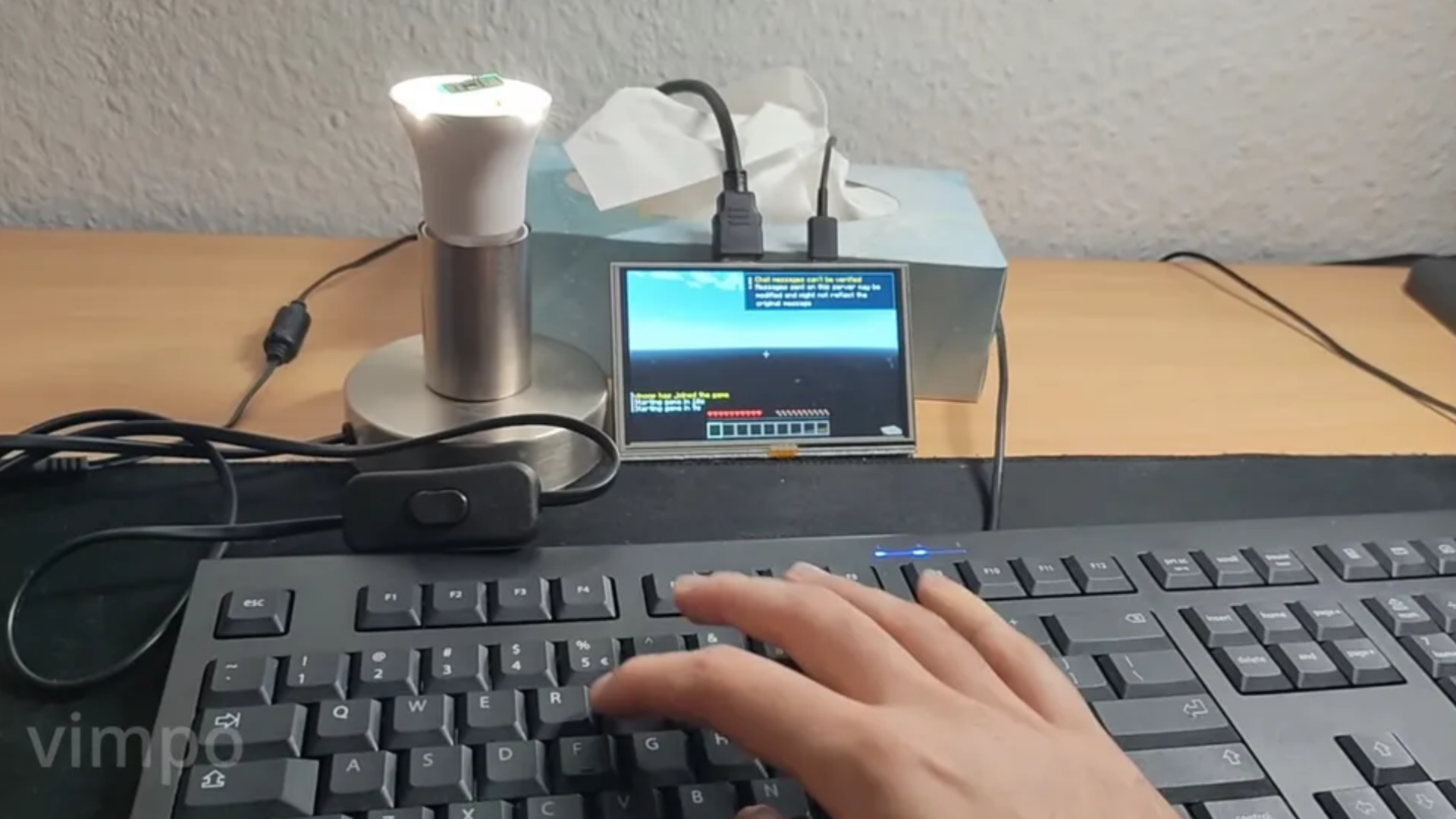Forget "can it run Doom?" - hardware buff shows you can run a Minecraft server on a cheap smart LED lightbulb
Ucraft shows efficiency matters more than heavy specs in experimental projects

- Vimpo hosted a Minecraft server on a cheap AliExpress smart LED bulb
- The bulb used a BL602 RISC-V microcontroller running at 192 megahertz
- The microcontroller had 276 kilobytes of RAM and 128 kilobytes of ROM
A hardware enthusiast known as Vimpo has taken the phrase “can it run Doom?” to a new level by managing to host a Minecraft server on a budget smart LED bulb.
The project began with an AliExpress-purchased bulb powered by a BL602 RISC-V microcontroller, a tiny chip featuring a single 192 MHz core, 276KB of RAM, and minimal I/O.
Despite such limited hardware, Vimpo successfully transformed the bulb into a fully functioning game server.
From light source to game host
The hardware hacker started by opening the bulb’s casing and carefully removing its microcontroller.
Wires were then soldered to its headers and linked to a USB-to-serial adapter to establish a stable communication interface.
This setup allowed Vimpo to control the bulb, turning it on and off before converting it into what he calls a “system” ready to host a Minecraft server.
Though the process looked more like tinkering with electronics than traditional web hosting, it essentially mimicked the logic behind remote server configuration.
Sign up to the TechRadar Pro newsletter to get all the top news, opinion, features and guidance your business needs to succeed!
The software side of the project was where the real challenge lay.
Running a Minecraft server on such restricted hardware required a stripped-down implementation called Ucraft.
Vimpo notes the “binary size is approximately 46K bytes without authentication and 90K bytes with the authentication library.”
Even under stress from ten players, the total memory use barely exceeded 70K bytes.
Those numbers may impress anyone familiar with typical game server hosting demands, yet Vimpo admits that Ucraft “lacks most, if not all, features of the vanilla server.”
While the server’s performance won’t replace professional Minecraft server hosting any time soon, the experiment shows how flexible embedded systems can be.
The smart bulb essentially became a miniature web hosting device, though its capabilities remain more of a novelty than a practical breakthrough.
Still, this joins a growing list of unconventional tech feats, from running ChatGPT-like AI models inside Minecraft to recreating the game using COBOL code.
Projects like Vimpo’s lightbulb server remind us that curiosity, not utility, often drives hardware innovation - in tech, there is a thin line between creativity and absurdity, and modern game server hosting can be reimagined at the smallest scale possible.
It may not light up the world of computing, but it certainly brightened the idea of what “running Minecraft” can mean.
Via Toms Hardware
Follow TechRadar on Google News and add us as a preferred source to get our expert news, reviews, and opinion in your feeds. Make sure to click the Follow button!
And of course you can also follow TechRadar on TikTok for news, reviews, unboxings in video form, and get regular updates from us on WhatsApp too.

Efosa has been writing about technology for over 7 years, initially driven by curiosity but now fueled by a strong passion for the field. He holds both a Master's and a PhD in sciences, which provided him with a solid foundation in analytical thinking.
You must confirm your public display name before commenting
Please logout and then login again, you will then be prompted to enter your display name.
